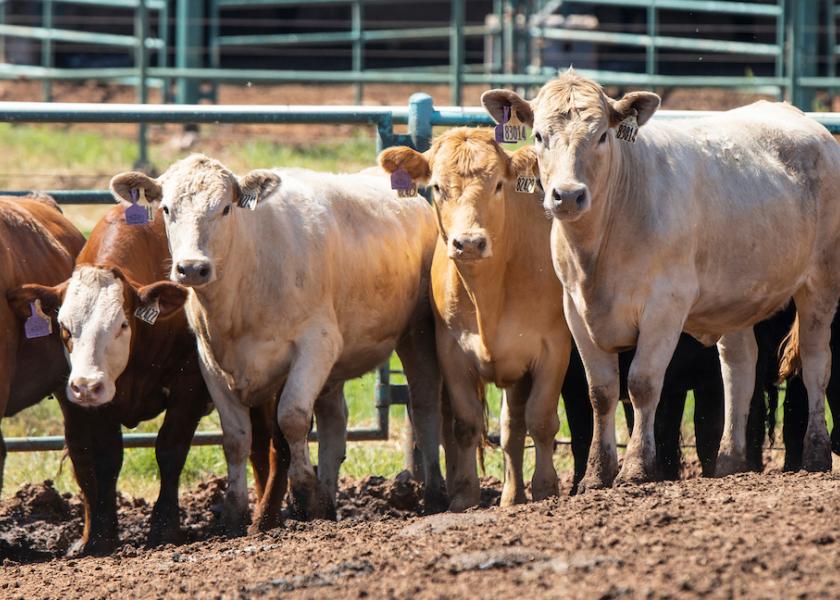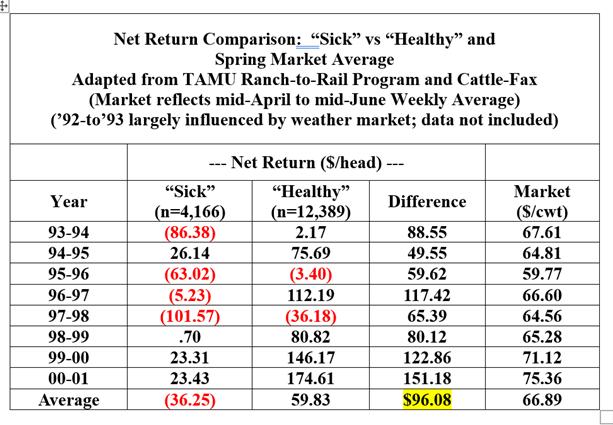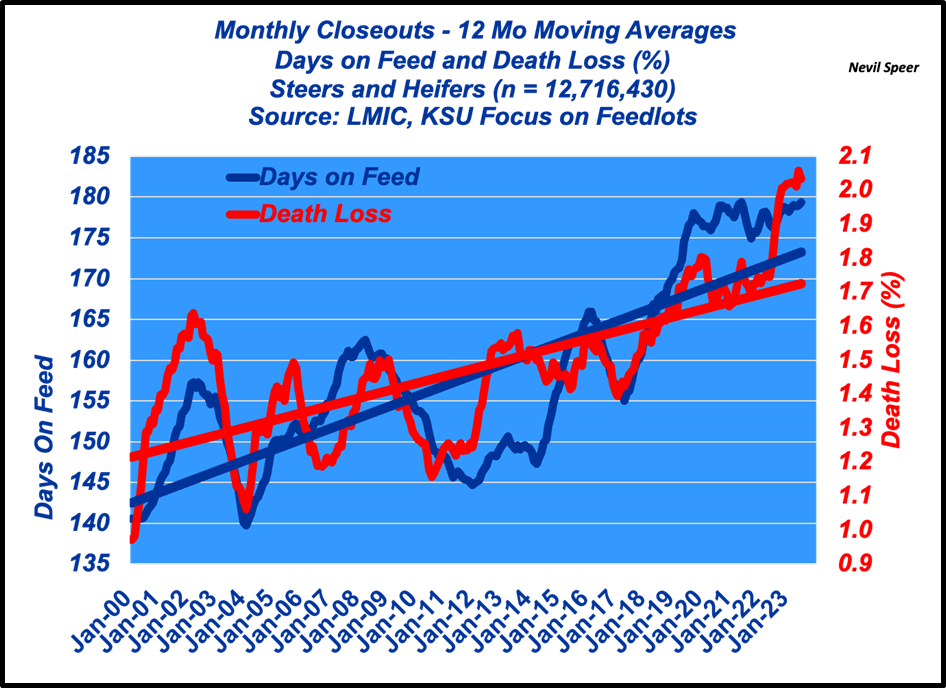Speer: Beating The Feedlot Witches Brew

TAMURR: A previous column featured results from the Texas A&M Ranch to Rail (TAMURR) program. The discussion highlighted differences in profitability among cattle that remained “healthy” through the feeding period (never pulled for treatment) versus those requiring at least one treatment (“sick”).
The net return comparison is provided in the table below – the difference between the two categories is nearly $100/head against a ~$67/cwt fed market. That differential is much wider today considering fed cattle are trading at nearly 3X that level.

KSU Focus on Feedlots: Now let’s switch gears to a separate university endeavor: Kansas State’s Focus on Feedlots program. It was established “to provide basic feedlot performance data for steers and heifers…” The dataset provides some especially valuable insights into the feeding sector. With that, perhaps we can tie some of this together.
Data Review: Several significant trends emerge from the K-State series.
- Days on Feed: there’s a steady upward trend that’s occurred for any number of reasons including:
- labor management (new placements require more labor),
- health risk management (new arrivals represent new risk),
- increased days facilitate grid quality grade premiums (maximizing genetic potential of slaughter mix),
- shrinking weight and yield grade discounts,
- higher markets - each swap represents greater financial investment and subsequent risk.
- Death Loss: the pattern follows days-on-feed. Perhaps most significant, the 12-month moving average eclipsed 2% in October ’22 and has remained there through June of this year.
Putting It Together: The graph illustrates the two variables side-by-side. Part of the marginal increase in death loss over time likely results from mortality on the back end (late-day / late-term deads). While seemingly obvious, the data tells an important story: more days means increased likelihood of something going wrong – ultimately ending in increased death loss. The days / death loss correlation equals .72.

Separately, in-weight has changed very little over time – there’s been some ebb-and-flow but the average during the past two decades is remarkably steady (~760 lb). Meanwhile, not surprisingly, out weight has increased – but the correlation between death loss and final weight (out-weight) is only .10. In other words, the variable that really matters relative to death loss is time!
Witches Brew: The data draws attention to some of the complexities associated with the challenge of longer feeding periods. The industry has done some important work in recent years addressing this challenge. Late-term mortality represents convergence of several factors and/or underlying contributors (“witches brew”) including:
- latent BRD lung damage (clinical or subclinical),
- increased metabolic load (ration formulation has stepped up metabolizable energy over time),
- genetics (much of the emphasis being on congestive heart failure – see Dr. Paul Beck’s recent summary here).
For some cattle, the clock starts ticking at arrival; more days represents greater likelihood of these factors collectively being manifested as late-term mortality.
Perhaps one of the more important questions emerging from the data is whether anything has really changed over the years. That is, the causal variables have always been at work. However, the industry previously harvested cattle with fewer days before they had sufficient time to culminate in late-day deads – hence, the “witches brew” didn’t occur as frequently.
Bottomline: Let’s circle back to the TAMURR data; it underscores the importance of keeping calves healthy. That encompasses numerous variables including proper nutrition at the ranch, weaning prior to shipment, pre-shipment vaccination, etc…. In combination they establish the cornerstone of resilience and profitability through the feeding period.
The KSU data puts an exclamation mark on those same principles. They’re increasingly important as cattle feeders extend the feeding period – a trend not likely to reverse anytime soon. More than ever, an emphasis on preventive management before arrival is essential to beat the witches brew.
Nevil Speer is an independent consultant based in Bowling Green, KY. The views and opinions expressed herein do not reflect, nor are associated with in any manner, any client or business relationship. He can be reached at nevil.speer@turkeytrack.biz.







